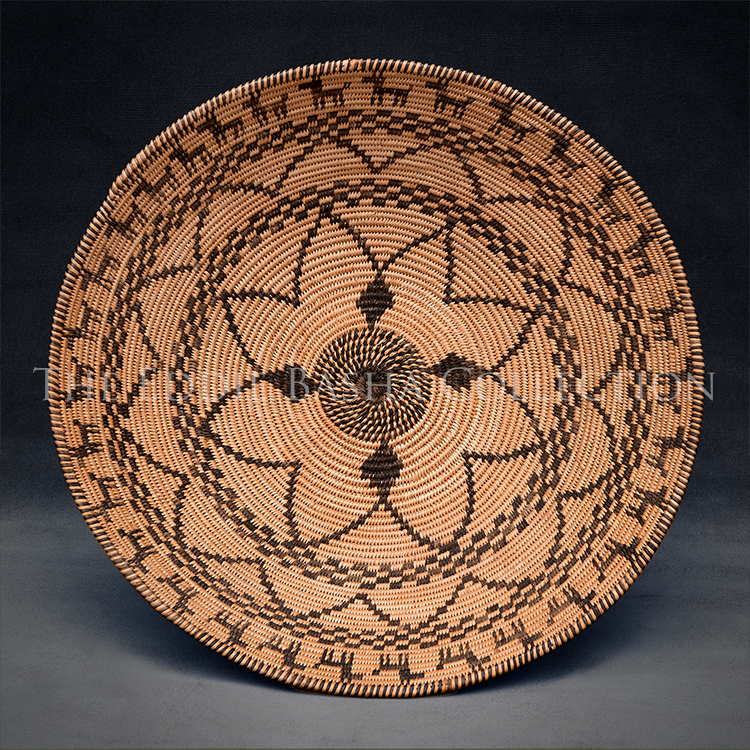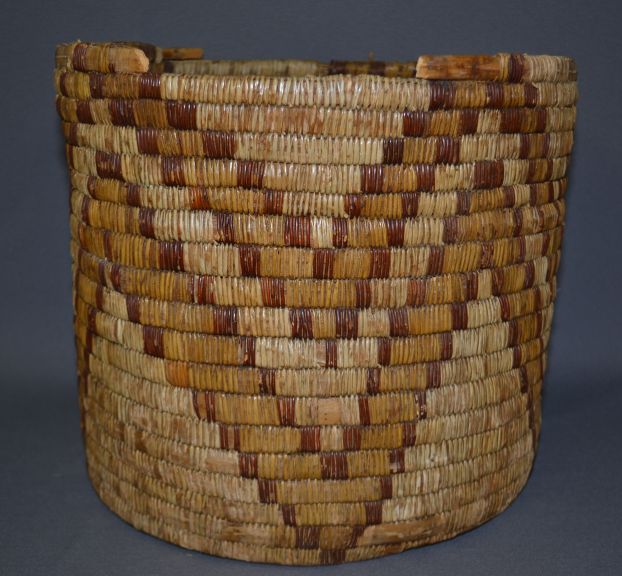
Threads of Resilience: The Enduring Art of Mescalero Apache Basket Weaving
MESCALERO, NEW MEXICO – In the sun-drenched valleys and pine-clad mountains of south-central New Mexico, where the White Mountain, Sacramento, and Guadalupe ranges converge, lies the ancestral home of the Mescalero Apache Nation. Here, amidst the whispering winds and the scent of piñon, a timeless art form continues to breathe: traditional basket weaving. More than just a craft, these intricately woven vessels are living embodiments of history, spirituality, and the enduring resilience of a people deeply connected to their land.
For the Mescalero Apache, weaving is not merely a skill passed down through generations; it is a profound act of remembrance, a prayer made tangible, and a vital link to their ancestors. Each fiber, carefully selected and meticulously woven, carries the stories of survival, adaptation, and cultural continuity. In an era where modern conveniences often overshadow traditional practices, the art of Mescalero Apache basketry stands as a testament to the community’s unwavering commitment to preserving its heritage.

A Legacy Woven Through Time
The history of Apache basket weaving stretches back thousands of years, predating European contact. For nomadic and semi-nomadic peoples like the Apache, baskets were indispensable tools for daily survival. They served a myriad of purposes: gathering wild foods like agave (mescal, from which the Mescalero derive their name), berries, and seeds; carrying water; storing provisions; winnowing grains; and even for ceremonial uses. The very structure of their lives was intertwined with the baskets they crafted from the bounty of their environment.
"Our ancestors lived by these baskets," explains Elder Mae Chee, her hands, gnarled by age, gently tracing the rim of a burden basket in her small, sunlit workshop. "They were our refrigerators, our backpacks, our water bottles. Every design, every stitch, tells a story of how we lived, how we thrived."
The materials themselves speak volumes about the Apache’s intimate knowledge of their ecosystem. Master weavers meticulously collect yucca leaves, sumac branches, willow shoots, and the prized devil’s claw (a plant known for its striking black fibers). The process of gathering is not random; it involves understanding the plant cycles, respecting the land, and often, offering prayers for a successful harvest.
"You don’t just go out and cut," says Elena Chavez, a younger weaver in her late 30s who learned from her grandmother. "You ask permission from the plant. You thank it. You only take what you need, and you leave enough for it to grow back. It’s about respect, about reciprocity."
Once gathered, the materials undergo a rigorous preparation process. Yucca leaves are stripped, split, and sometimes sun-dried or boiled to make them pliable. Sumac and willow branches are peeled and split into fine strands. The black of the devil’s claw is naturally occurring, while other colors might be achieved through natural dyes derived from plants, roots, or minerals, though commercial dyes are sometimes used today for expediency. This preparatory stage can take weeks, even months, before the first fiber is ever woven.
The Art of the Stitch: Techniques and Meanings
Mescalero Apache baskets are renowned for their strength, durability, and intricate beauty. While several weaving techniques exist across different Apache groups, coiling is perhaps the most distinctive and prevalent among the Mescalero. This method involves spiraling a foundation bundle of fibers (often yucca or sumac) and then stitching it to the previous coil with a flexible splint, using an awl to pierce the foundation. The tightness of the coils and the precision of the stitches are hallmarks of a master weaver.

Common basket forms include:
- Burden Baskets (Gus’tah): Large, conical baskets, often decorated with rawhide fringe and tin cones, used by women to carry heavy loads on their backs. These are particularly iconic of Apache culture.
- Water Jugs (Tu-tah): Coiled baskets, often pitched with piñon gum to make them watertight, essential for desert survival.
- Storage Baskets: Various shapes and sizes for holding food, clothing, or ceremonial items.
- Gambling Trays (Tze-cho): Flat, shallow baskets used in traditional games, often featuring geometric designs.
The patterns woven into the baskets are not merely decorative; they are imbued with cultural significance, representing natural elements, spiritual concepts, or clan affiliations. Designs might depict mountains, stars, lightning, or the sacred four directions. Some patterns are believed to bring good fortune, protection, or connect the weaver to ancestral spirits.
"When I weave a pattern, I’m not just thinking about how it looks," Elena explains, her fingers deftly manipulating yucca fibers. "I’m thinking about what it means, what my grandmother told me it means. It’s like writing a story without words." The rhythmic motion of weaving, the piercing of the awl, the pulling of the stitch, becomes a meditative practice, a dance of hands and spirit.
Challenges and the Call for Revival
Despite its deep roots, Mescalero Apache basket weaving faces significant challenges in the 21st century. The forces of assimilation, particularly the historical boarding school system which actively suppressed Native languages and cultural practices, severed many generational links. Elders who held invaluable knowledge passed on without having adequately shared their skills with the next generation.
"My grandmother knew so much, but she was afraid to teach it openly for a long time because of what happened to her in school," Elder Chee recounts, a hint of sadness in her voice. "We lost so many weavers from that generation. It’s a miracle we still have it at all."
Furthermore, the availability of natural materials can be a concern. While the Mescalero Reservation encompasses a vast and diverse landscape, climate change, land management practices, and invasive species can impact the abundance and quality of traditional basketry plants. The time-consuming nature of the craft also presents a hurdle; in a fast-paced world, dedicating weeks or months to a single basket can be difficult for younger people balancing work and family responsibilities.
"It’s not something you can rush," says Robert Chino, a cultural preservationist for the Mescalero Apache Tribe. "A single burden basket can take hundreds of hours. You have to be patient, dedicated. It’s a commitment."
Weaving a Future: Education and Empowerment
Recognizing these challenges, the Mescalero Apache Nation and dedicated community members are actively working to revitalize and preserve this vital art form. Workshops are regularly held at the Mescalero Apache Cultural Center and through tribal programs, inviting both tribal members and interested outsiders to learn from elder weavers. These sessions are more than just craft classes; they are immersive cultural experiences, often including lessons on language, history, and the spiritual significance of the materials.
"We need to get our young people interested," Chino emphasizes. "It’s not just about making a basket; it’s about connecting them to who they are, where they come from. It’s about pride in their heritage."
Younger weavers like Elena Chavez are a beacon of hope. Having absorbed the knowledge from her grandmother, she now teaches her own children and participates in community workshops. "When I see a young person pick up an awl for the first time, it fills me with so much hope," she says, a warm smile spreading across her face. "It’s hard, it’s frustrating sometimes, but when they finish their first small basket, you see that spark, that connection. They realize they are part of something bigger."
The act of weaving itself is also being recognized for its therapeutic and healing properties. The repetitive motion, the focus required, and the connection to ancestral practices can provide a sense of calm, purpose, and cultural affirmation, especially for those grappling with modern-day stresses or historical trauma.
More Than an Object: A Living Heritage
Today, Mescalero Apache baskets are prized by collectors and museums for their artistic merit and cultural significance. However, for the Mescalero people, their value extends far beyond mere aesthetics or monetary worth. Each basket is a living story, a tangible link across generations, a repository of knowledge, and a symbol of an enduring spirit.
As Elder Mae Chee carefully binds another coil, her voice soft but firm, she offers a final thought: "When you hold one of our baskets, you’re not just holding yucca and sumac. You’re holding the hands of my grandmother, and her grandmother, and all the women who came before us. You’re holding our prayers, our strength, our very being."
In the heart of the Mescalero Apache Nation, the rhythmic whisper of fibers being pulled taut, the subtle scent of drying yucca, and the quiet determination of the weavers continue to echo through the mountains. These threads of resilience, woven with care and imbued with spirit, ensure that the vibrant legacy of Mescalero Apache basket weaving will endure for generations to come, a powerful testament to a culture that refuses to be silenced, choosing instead to weave its future with the wisdom of its past.


